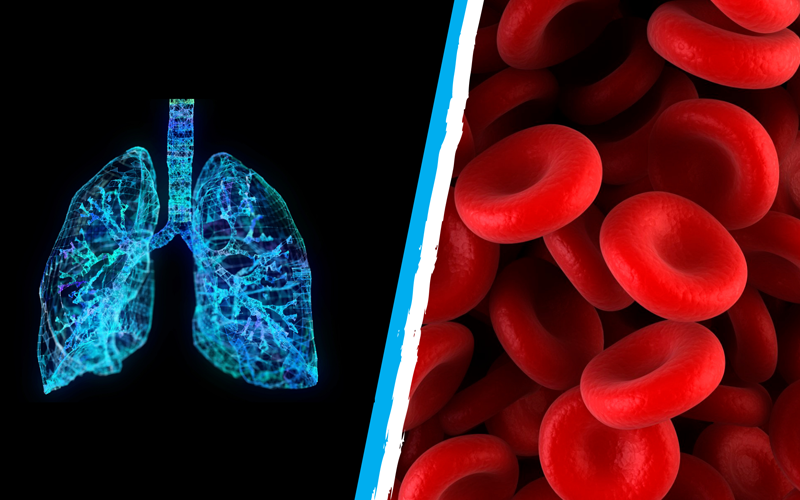Article authored by Readout Health with editorial oversight from Chief Medical Officer, Naomi Parrella, MD.
Reaching and maintaining a healthy weight can be challenging for many people, and it’s also a valuable goal to strive for. If you’ve been following the news at any point these last few years, you probably know that there’s a real concern among public health professionals surrounding the national obesity epidemic. Beyond just being a cosmetic concern, having obesity can have far-reaching negative effects that can increase the risk of long-lasting health problems. The term “obesity” refers to a bodyweight that is greater than what’s considered healthy relative to a person’s height, diagnosed in the doctor’s office by a BMI of 30 or greater. Fortunately, even if you’ve been diagnosed with obesity, there’s plenty you can do to take back control for your overall health.
Obesity In America: Where We Are And Where We’re Headed
Obesity in America: where we are and where we’re headed
How many Americans are facing overweight and obesity today? The latest data shows that nearly a third of adults (30.7%) are overweight, more than 2 in 5 adults (42.4%) have obesity, and 1 in 11 adults (9.2%) are facing severe obesity.
Weight challenges aren’t only limited to adults: 16.1% of American children are overweight, 19.3% have obesity, and 6.1% are considered to have severe obesity.
What’s even more worrisome, according to a recent Harvard study, is that this troubling trend isn’t expected to end anytime soon. It’s projected that half of American adults will have obesity and a quarter will have severe obesity by 2030. It is predicted that more than half of the population will have obesity in 29 states, and that all 50 states will have an obesity rate higher than 35%.
The Consequences Of Obesity
There are many reasons that treating and preventing obesity has garnered so much attention. To begin with, there are significant medical costs linked with obesity, not to mention the real social and emotional distress, including feelings of depression, shame, or guilt, that often go along with it.
Perhaps more alarming, though, is the direct negative impact that obesity can have on physical health. Researchers have discovered that having obesity can lead to chronic disease and a shorter life expectancy.
Which risks are the most common to look out for?
Heart disease. This condition covers several heart-related problems, including heart attack, heart failure, abnormal heart rhythm, and sudden cardiac death. Along with too much sugar in the blood, too much fat in the blood and high blood pressure can raise the risk for heart disease as well. High blood pressure, also called hypertension, means that blood is flowing through the blood vessels at a higher force than normal, which can overburden the heart and blood vessels. Losing as little as 5% to 10% of your weight may lessen your risk for heart disease by lowering cholesterol and blood pressure while improving blood flow.
Type 2 diabetes. About 80% of people with type 2 diabetes – a disease that occurs when blood sugar is too high – are overweight or have obesity. People with type 2 diabetes are at higher risk for other conditions like kidney disease, heart disease, stroke, nerve damage, and eye disease. Losing weight can reduce the chances of developing type 2 diabetes.
Stroke. Primarily caused by high blood pressure, a stroke occurs when the brain’s blood supply is abruptly cut off. This can damage brain tissue, potentially impacting the ability to function.
Sleep apnea. Sleep apnea is a common yet serious sleep disorder in which breathing is repeatedly interrupted during sleep, sometimes leading to a temporary lack of breathing altogether. If left untreated, sleep apnea can lead to type 2 diabetes, high blood pressure, and heart disease. Anyone can be affected by this condition, but obesity is considered one of the main contributors to a person’s risk.
Metabolic syndrome. This term describes a cluster of conditions that up your chances for diabetes, heart disease, and stroke, and obesity is a primary component of it. The others include high blood pressure, high blood sugar, and high amounts of fat in the blood.
Osteoarthritis. The extra weight associated with obesity puts excessive pressure on the body’s cartilage and joints, causing stiffness, swelling, and pain.
Kidney disease. High blood pressure is the most common cause of kidney disease, a condition characterized by kidneys that are unable to filter blood properly, although obesity is even shown to advance kidney disease on its own.
Some cancers. Evidence shows that higher amounts of body fat can boost the risk for certain types of cancers. These include endometrial, esophageal, liver, kidney, colorectal, pancreatic, breast, and multiple myeloma cancers. Researchers believe this can happen for several reasons. First, obesity can cause chronic inflammation in the body, which, over time, can damage DNA and lead to cancer. Another reason is that more fat tissue is associated with a greater production of estrogen, which is linked with an increased risk of breast, endometrial, and ovarian cancers. Finally, people with obesity often have higher levels of insulin in their blood, and this condition can lead to colon, prostate, kidney, or endometrial cancers.
Infection. Having obesity can make you more vulnerable to infection. Specifically, there’s evidence to suggest that obesity is associated with a higher risk of skin infections, gastrointestinal tract infections, and urinary tract infections. This is because a body with unhealthy excess weight is prone to contain more inflammation and experience greater metabolic stress. When there’s an abundance of fat tissue, the anti-inflammatory immune cells that are normally found in lean tissue are replaced by a higher number of pro-inflammatory immune cells, impairing the immune system’s ability to fight off infection.
Aside from these ailments above, carrying around excessive weight can also aggravate common health issues like asthma, depression and anxiety, migraines, and back pain.
What Can Cause Obesity?
Like many other health conditions, obesity can’t always be traced back to one singular cause. A few factors can come into play that can make someone more likely to be overweight or obese, and also can make it much more challenging to lose weight and keep it off.
For starters, it’s thought that a strong family history of being overweight or having obesity may play a role. This means that if one or both of your parents struggle with their weight, chances are higher that you will too. It appears that the amount of fat we store in our body, and where the fat is stored in the body, can be influenced by our genes.
Likewise, our age seems to matter: the older we are, the easier it seems to gain weight. It’s not unusual for someone who’s always been within a normal range to suddenly start experiencing weight gain in early adulthood through middle age.
Obesity is also more common in women than men. Younger women tend to store fat in their buttocks and hips, where men and post-menopausal women usually see extra fat build up in their belly.
Daily lifestyle factors can have a significant influence on the likelihood you’ll be overweight or obese, especially the food choices you make and the amount of physical activity you’re getting. Eating and drinking unhealthful foods, drinking alcohol, taking certain medications, dealing with chronic stress, and spending a lot of time not moving your body can definitely boost your risk.
Often, our family upbringing inspires our own lifestyle choices. Families that consume large amounts of unhealthy foods together and mostly engage in sedentary activities like watching TV can have a long-term, influential effect.. Disrupted sleep can also do a number on our ability to manage our weight by increasing our levels of ghrelin, the “hunger hormone” that signals to our brain that we need to eat. One 2018 study seemed to confirm this, suggesting that people who consistently sleep less than 7 hours per night – instead of the recommended 7 to 9 – are more likely to gain weight.
Treating Obesity With A Healthier Lifestyle
If you’ve ever been down the weight loss path in the past, you probably know all too well that losing and maintaining weight can be super challenging. While it might be tough, there’s reason to be optimistic! Having a plan and support for establishing healthier habits and sustaining them within an improved, long-lasting lifestyle may be the ticket to maximizing your weight loss once and for all.
So, what exactly do “healthier habits” for a slimmer body look like?
The first line of defense when it comes to treating obesity comes down to being mindful of the food – specifically, the carbs – that we eat. Reducing the number of carbs that we get in a day is key for getting into the fat burn state to manage weight and treat metabolic conditions associated with obesity. One reason that restricting carbs may be so effective for weight loss is that it prevents blood sugar swings by curbing the amount of insulin circulating in the blood, and can also cause us to feel less hungry by suppressing ghrelin.
It’s important to remember that if you’re taking any medications for diabetes, heart disease, heart failure, kidney disease, or blood pressure, consult with your provider before cutting down significantly on carbs. Doing so without proper guidance can be harmful to your health.
There are a variety of carb-restrictive diets out there: the ketogenic, low-carb, South Beach, Atkins, Whole30, Paleo, and Intermittent Fasting diets all come to mind. For weight loss, a general rulet for most people is to aim for a net carb intake (that is, net carbs (g) = total carbs (g) – fiber (g)) of less than 50g a day. For people who are working toward reversing a disease process like diabetes, metabolic syndrome, or some cancers, getting less than 30g per day may be needed.
Beyond the general rule for carbs, everybody has a different threshold of their best number. Ultimately, how carbs are processed in the body is unique from person to person – some people can tolerate more carbs and some less before seeing metabolic benefits – and how many carbs you can tolerate depends on multiple factors. Using Biosense® makes knowing exactly how carbs are influencing your own distinct physiology effortless and instant. Biosense® takes all the guesswork out by providing you the valuable insight you need to know whether your new carb-mindful way of eating is working for you toward reaching your health goals, or if it’s time to make an adjustment.
Along with careful consideration of how many carbs you’re getting every day, incorporating regular physical activity into your week is key as well. Physical activity may not only help you maintain your weight loss, it is also helpful for alleviating depression and anxiety, and reducing high blood pressure and the risk for type 2 diabetes, heart attack, and stroke.
As a general guideline to maintain weight loss, the CDC recommends 150 minutes of moderate-intensity aerobic activity like walking briskly, light yard work, or biking casually per week or 75 minutes of vigorous-intensity aerobic activity like jogging, swimming, or jumping rope per week. Aim to include strengthening activities two days a week as well.
Diagnosing Obesity: A Word About BMI
Thinking back to the last visit with your doctor for an annual physical, you probably remember two things that took place right off the bat: stepping up on the scale and having your height measured. These two metrics – your weight and your height – offer your provider a quick guess as to how healthy your weight is in relation to your height, and may offer some insight as to how at-risk you are for weight-related issues down the road.
Your risk is calculated using what’s called a Body Mass Index, or BMI, and it is your BMI that takes these metrics into account that helps your provider determine whether you are overweight or have obesity.
The thing is, your BMI alone doesn’t necessarily reveal the whole picture, and so it’s not the most reliable indicator of how metabolically healthy you really are.
For one thing, the BMI doesn’t differentiate between fat and lean mass, and it can’t discern muscles from bones in your body. So in reality, it doesn’t do a great job of revealing how much fat versus muscle you actually have.
Just as importantly, your BMI doesn’t say whether the fat you are carrying around is the more dangerous visceral fat stored around your waist and enveloping your organs, heightening your risk for heart disease, or the less harmful subcutaneous fat, which lies just under the skin.
The truth is that people of different shapes, sizes, and genders can all have the same weight and BMI, but very different metabolic health profiles. Take high-performance athletes, as an example. Muscle is denser than fat, so well-muscled athletes might very well have a BMI that classifies them as obese, even though they have a very low percentage of body fat. Also, as people get older, they may lose muscle and bone, causing their weight to drop or stay the same. In this case also, the BMI may not be representative of the increased health risks.
Taking these shortcomings into account, your provider may also want to measure around your waist to get a more accurate picture of your health risks. As in the example of an athlete who has a higher BMI, the waistline is a better marker for health risks. In general, if your waist size is larger than 40 inches as a male or 35 inches as a female, and most of your fat resides around your middle, your health risks rise. These numbers can vary based on your ethnicity and your doctor can help you understand your personal risk.
The key takeaway? Your BMI is just one of many tools your provider can use to gain insight about your health, and can warn us of potential trouble down the road. But no matter what the number is, there’s always hope. Your BMI isn’t set in stone, and your weight doesn’t define you. In fact, there’s no weight that’s truly “good” or “bad.” Instead, how much you weigh can simply indicate how your body is managing. The great news is that by adopting a long-term healthy low-carb lifestyle with plenty of physical activity, your metabolic health can change for the better, resulting in less risk for disease and a better quality of life for years to come.



